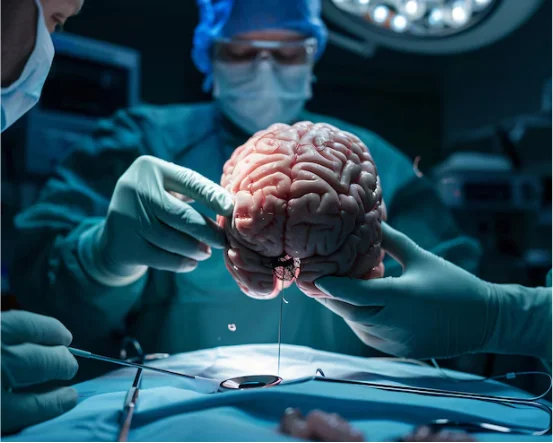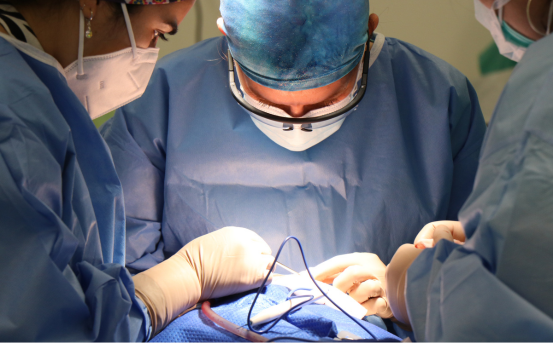Neuroendoscopy has revolutionized the practice of neurosurgery through enabling the use of minimally invasive treatments for spinal and brain disorders. Contrary to traditional open brain surgery using a surgical instrument, neuroendoscopy makes use of a small camera referred to as an endoscope that allows neurosurgeons access and treat conditions in the brain through tiny openings. Before the procedure can be carried out, precise diagnosis for neuroendoscopy surgery plays an important role in determining if the patient is a good candidate for this procedure.
What is Neuroendoscopy?
Neuroendoscopy is an advanced surgical technique that permits neurosurgeons to perform surgeries on the brain, ventricles and the spinal canal with little disturbance to the surrounding tissues. It is typically employed to treat:
- The condition is known as hydrocephalus (excess of brain fluid)
- Colloid cysts
- Pituitary tumors
- Ventricular tumors
- Brain lesions and cysts
The procedure is usually performed with a tiny endoscope that is inserted through an open or surgically made opening. This method reduces the time to recover and scarring as well as the risk of surgery, making it an option that is preferred for various neurological ailments.
Why Diagnosis is Essential Before Neuroendoscopy Surgery
1. Identifying Suitable Candidates
Certain neurological disorders cannot be treated with neuroendoscopy. A clear diagnosis will help determine if a patient’s situation can be treated with this method. For instance even though a small heart tumor could be easily accessed via endoscopy but a more deep-seated or diffused lesion might necessitate open surgery.
2. Preventing Complications
The correct diagnosis prior to surgery reduces the chance of complications during surgery like bleeding, infection or damage to vital brain structures. It also aids neurosurgeons to plan the most efficient surgical route.
3. Customized Treatment Planning
There are no two brain disorders exactly the same. A thorough assessment process permits the surgeon to tailor his approach which improves the surgical precision and postoperative results.
4. Confirming the Nature of the Lesion
Before draining or removing the lesion, it is essential to know its source size, shape, location and the way it behaves (benign or malignant). This information is essential to long-term treatment and prognosis.
Common Diagnostic Procedures for Neuroendoscopy Surgery
1. Magnetic Resonance Imaging (MRI)
MRI is one of the widely utilized imaging method in neuroendoscopic diagnosis. It offers high-resolution images of the spinal cord and brain which help to determine:
- Cysts or tumors that occur in the ventricles
- Fluid buildup (hydrocephalus)
- Size and location of the lesions
- Anatomical variations
Functional MRI (fMRI) could also be used to measure brain function and identify the most critical areas prior to surgery.
2. Computed Tomography (CT) Scan
CT scans are typically employed in situations of extreme need or in situations where MRI is not possible. CT imaging offers rapid, clear pictures of the brain. CT scans are especially useful for identifying:
- Brain hemorrhages
- Fractures to the skull
- Calcified lesions
CT scans can be useful in the postoperative phase with the use of images-guided navigation.
3. Neuroendoscopic Evaluation (Endoscopic Ventriculoscopy)
Sometime, diagnostic endoscopy can be carried out under general or local anesthesia to gain a precise glimpse of the brain’s ventral system. This permits a real-time evaluation of the disease.
This is particularly helpful to:
- Biopsy of tumors
- Inspecting CSF (cerebrospinal fluid) pathways
- Evaluation of cysts or blockages
4. Lumbar Puncture and CSF Analysis
If hydrocephalus, or infections such as meningitis have been identified, a spinal fluid analysis can help detect the presence of blood, infection and tumor-cells. It is a complement to diagnostic tests using imaging to confirm the necessity for surgery.
5. Electroencephalogram (EEG)
In patients suffering from neurological or epileptic symptoms or neurological symptoms, the EEG can be used to determine unusual brain activity. Although it is not the primary tool to plan a surgical procedure but it is helpful in understanding the disorders.
Advanced Diagnostic Tools Supporting Neuroendoscopy
a. Intraoperative Neuro-Navigation Systems
These systems function as an GPS to the brain using preoperative MRI or CT information to direct the endoscope precisely towards the desired. This is to ensure safety and efficiency for deep-seated lesions.
b. Diffusion Tensor Imaging (DTI)
DTI is a special type of MRI which maps the white matter tracts inside the brain. It can help avoid neuropathways during surgical procedures, which reduces the chance of post-operative deficits.
C. MR Spectroscopy and PET Scans
The imaging techniques provide chemical and metabolic data on brain tissues, which is particularly important in distinguishing benign from malignant tumors.
When Should You See a Doctor for Neuroendoscopic Evaluation?
You should see a neurologist or neurosurgeon if anyone you know has:
- Consistent headaches and vomiting
- Double vision or blurred
- Unexplained seizures
- Problems with memory or behavior
- Numbness or weakness in the legs
- A sudden loss of coordination or balance
These signs could indicate an intracranial cyst, pressure, or tumors that could be treated using neuroendoscopy, following an accurate examination.
Conclusion
The effectiveness of neuroendoscopy surgeries heavily depends on the precision and precision of the preoperative diagnosis. Utilizing the latest imaging technology and expert neurosurgeons, neurosurgeons are able find the root of spinal and brain issues and determine the most efficient, safest treatment program.
If you’re experiencing neurological issues which may require surgery having the right diagnosis tests are the initial and most crucial step. This ensures that neuroendoscopy will be suitable and safe for the specific condition you’re experiencing. A timely diagnosis not only improves the outcomes of surgery, but it will also result in speedier recovery and improved standard of living.























